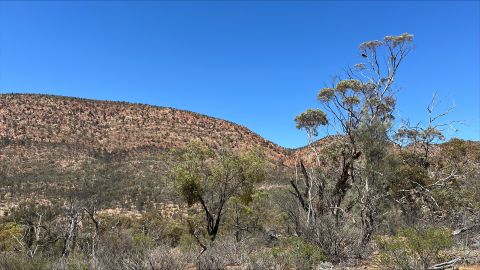
The project is funded by the Australian Government ($3.72 million) and the South Australian Government ($400,000). Australian Government funding is provided through the National Water Grid Fund.

The landscape of the Iga Warta Homeland in the Flinders Ranges. Image credit: Rebecca McPhee, DCCEEW.
Project overview
This project will deliver water supply, quality and access solutions. These have been agreed to with the Aboriginal homelands of:
- Iga Warta
- Leigh Creek Station
- Kakalpurannha
- Yappala.
Residents are facing unacceptable conditions if risk factors are not addressed. These risks relate to water availability and quality, infrastructure failure and changing demand.
The solutions include:
- tanks, bores and water access and monitoring systems
- water treatment systems for disinfection and softening
- training for repairs and maintenance – so communities can manage their own water supplies.
These solutions use the findings of a National Water Grid science project on groundwater quality in the area.
The communities will be involved throughout the project, sharing ideas and insights. The project will also help people to stay living and gathering on Adnyamathanha Country.
The project will support:
- tourism and cultural activities, including art and language practice
- environment and heritage protection, including land regeneration and biodiversity conservation
- community horticulture and animal husbandry
- resilience to the impacts of climate change
- opportunities for capacity-building and self-determination.
The works planned for Iga Warta will build on the success of an earlier National Water Grid project, completed in 2024.
This project is part of the Australian Government’s commitment to Close the Gap on water security for First Nations people.
Key project benefits
Read more
- Media release: $60.8 million towards securing water needs in remote First Nations communities
- Read about the Iga Warta water security and Self-supplied remote communities groundwater quality assessment projects
- Find out more about First Nations water infrastructure projects

